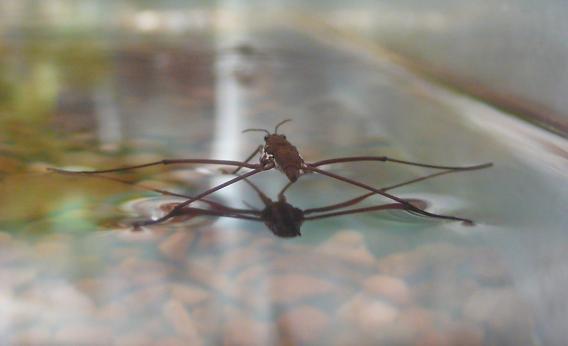There are plenty of examples of nature-inspired robots, and most of them are terrifying. Take the centipede robot and the Big Dog. Then there are those quadrotor drones that, while perhaps not just like something you find in nature, are at least reminiscent of dragonflies, and as Farhad Manjoo writes, will almost definitely take over the world.
When those quadrotors start to wrest control from us humans, don’t be surprised if they’re accompanied by these new microbots that look and act almost exactly like those water strider or Gerridae bugs you might have seen miraculously “walking” across creeks, ponds, and puddles.
Water strider bugs are able to do stay on top of water thanks to the water’s surface tension and their own slender and strong hydrophobic legs. In addition to spreading their weight over a large surface, the bugs also are covered with thousands of hairs per square millimeter that trap air and deflect liquid. Since water is full of polarized molecules that like to stay together, the bugs can effectively keep from sinking by staying dry—even if they’re hit with a wave when they’re jumping, which is how they actually move over liquid. Here’s a video:
Engineers have been working on water-skimming micro robots for years, but they haven’t been able to master the design problem of surface tension. To avoid obstacles and move efficiently the robots need to push down, and when they break the surface tension and get wet, they’re sunk.
The solution to the problem, detailed in American Chemical Society: Applied Materials, came via porous, super water-repellant nickel foam. Even though the new microbots weigh over 1000 times as much as a water strider, they can jump more than five inches at a time. The bio-inspired bot can avoid obstacles and stay afloat—and that means it could be a tool for everything from monitoring water quality to spying.
